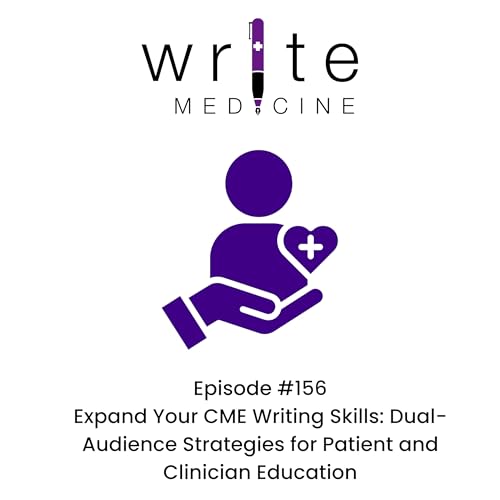
Expand Your CME Medical Writing Skills: Dual-Audience Strategies for Patient and Clinician Education
No se pudo agregar al carrito
Add to Cart failed.
Error al Agregar a Lista de Deseos.
Error al eliminar de la lista de deseos.
Error al añadir a tu biblioteca
Error al seguir el podcast
Error al dejar de seguir el podcast
-
Narrado por:
-
De:
How do you take one complex medical concept and make it clear, accurate, and actionable for both clinicians and patients, without losing credibility?
If you’re a CME writer, you know the challenge of translating science into education that actually sticks. But as more CME projects tether clinician education with patient-facing components, the real test is flexing your craft to serve two very different audiences at once. Get this right, and you not only improve learning, you expand your professional scope and impact.
In this episode, you’ll discover:
- How to apply practical frameworks to dual-audience writing.
- Structural techniques that make content engaging, empathetic, and accessible.
- A simple 3-sentence exercise to sharpen clarity for patients and precision for clinicians—anytime, anywhere.
🎧 Tune in now and learn how to expand your CME writing craft into dual-audience education with one portable tool you can start using today.
Resources
Resources to support plain language, readability, and accessibility.
- https://readable.com/readability/
- Cognitive accessibility
- The Patient Education Materials Assessment Tool (PEMAT)
- Informed consent navigator tool
- Plain Language Summaries
- Plain Language Checklist for Health Professionals
- Plain language in biobank consent
- Plain Language Association
- Cognitive accessibility
- Informed consent navigator tool
Episodes Mentioned
- EP31: Cultivating a Visual Mindset with Karen Roy and Bhaval Shah
- EP 41: Nurture Connection-Tell them a Story with Ben Riggs
- EP109: Crafting Inclusive and Accessible Medical Content with Virginia Chachati
Practice: Explain one complex idea in three sentences, twice—once for patients, once for clinicians.
Take one complex concept: SGLT2 inhibitors reduce heart failure hospitalizations.
For patients:
- What it is: “These medicines...



